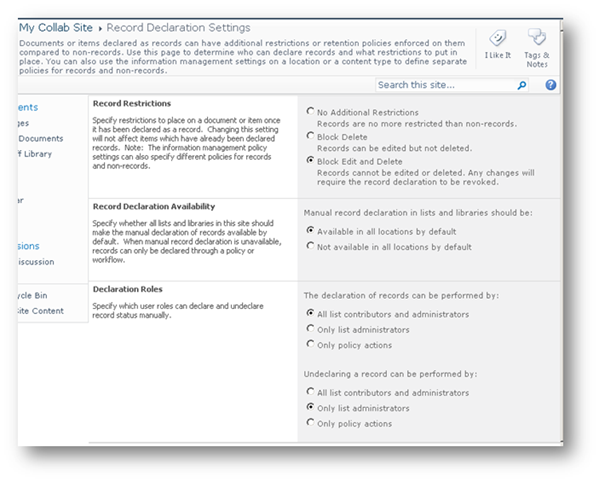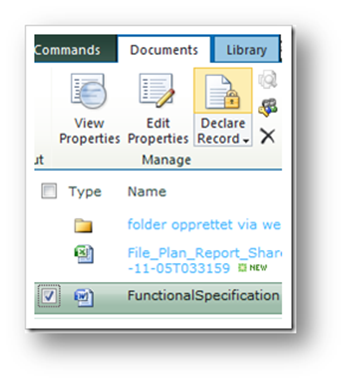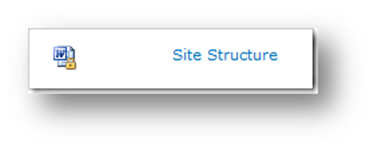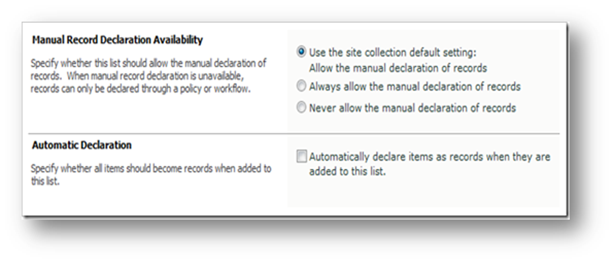Overview
- A new capability in SharePoint 2010 is In-Place Records management
- Instead of moving a document to a specific SharePoint Records Center in order to declare it a record, a document can be declared and handled as a record within site it was created in
- After having declared the document as a record, the document can now have policies and restrictions different from when it was just a document in the site
- Policies can be added either to the Content Types or directly on the document libraries
- Documents can be declared as records either manually or automatically
- Manual record declaration can be configured at the Site Collection level and overridden in each document library within the site
- Activated as a Site Collection Feature:
- Enable-SPFeature -id InPlaceRecords -url “<site collection url>”
- Site Collection settings for Records Declaration allow blocking delete & edit of documents
- Also allow security settings to allow declarations of records by role
- When Record Declaration Availability is set to “Available in all locations by default”, a new icon appears on the Ribbon which allows the user to select a document and declare/un-declare a record:
- A document will get a padlock added to its icon when declared as a record:
- You can also override the record declaration availability on the document library level
- Automatic declarations of records within document libraries is possible by checking the “Automatic Declaration” option in the document library settings
- API Reference – (Microsoft.Office.RecordsManagement.RecordsRepository Namespace –> IRecordDeclarationHandler Interface) – Note: I haven’t tested this yet….
class DeclarationFilter : IRecordDeclarationHandler, IRecordUndeclarationHandler
{
RecordOperationResult IRecordDeclarationHandler.OnDeclare(SPListItem item)
{
// checks if item is marked as "_do_not_declare_record"
if (CheckRecordFilterProperty(item, PROPERTY_DO_NOT_DECLARE))
{
// item mared as "_do_not_declare_record", cancel processing
return RecordOperationResult.CancelRecordProcessing;
}
else
{
// continue with default processing
return RecordOperationResult.ContinueRecordProcessing;
}
}
RecordOperationResult IRecordUndeclarationHandler.OnUndeclare(SPListItem item)
{
// checks if item is marked as "_do_not_undeclare_record"
if (CheckRecordFilterProperty(item, PROPERTY_DO_NOT_UNDECLARE))
{
// item mared as "_do_not_undeclare_record", cancel processing
return RecordOperationResult.CancelRecordProcessing;
}
else
{
// continue with default processing
return RecordOperationResult.ContinueRecordProcessing;
}
}
}
So why use In-Place Records Management?
- Don’t need to route everything to Records Center’s anymore, can have declared records across the organization in different SharePoint repositories
- Company wants certain documents and wiki’s to be declared as records but without moving them to a Records Center
- Current Records center is getting close to the recommended content database size limit and, scalability is becoming an issue as the company does not have resources to invest in a second Records Center at this point of time
The complete list of this series can be seen by the following links:
1. Introduction
2. Document IDs
3. Managed Metadata Service (Term Store)
4. In-Place Records Declarations
5. Site Collection Auditing
6. Content Organizer
7. Compliance Details
8. Hold and eDiscovery
9. Content Type Publishing Hubs
10. Multi-Level Retention
11. Virtual folders and metadata based navigation
12. Scaling
13. Send To…
14. Document Sets
References
http://blogs.msdn.com/mcsnoiwb/archive/2009/11/05/sharepoint-2010-records-management.aspx




